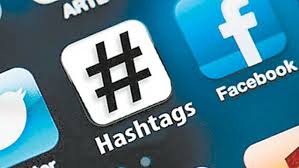If you’re looking for a way to harness social media for research and promotion, you have a very powerful tool in the form of hashtags. You can tap into this simple system to spy on the competition, identify opportunities, and much more.
What are Hashtags?
The hashtag system offers a neat and elegant way to index web content and group topics together for ease of discovery. If you use Twitter you’ll have seen those short links preceded by the pound or hash sign (#). #tiledflooring, #woodflooring, #bambooflooring and so on could be tags used by a flooring business.
Clicking the tag will bring up other topics with that tag on that particular platform. In that regard, they’re like hyperlinks for social media. They’re extremely useful when looking for potential partners, to see what the competition is doing, or to get your content found.
Hashtags are also useful as a branding tool. Famous companies are already adopting hashtags as a way to promote their brands. Witness #MakeItCount from Nike and #ProgressIs from Audi as prominent examples.
Usage of tags is growing. One recent study revealed that 58% of social media users use hashtags regularly, with 42% of users clicking on hashtags to access new content and related information. That means to be found, you need to formulate effective tags to help searchers.
How to Create Hashtags
If you’re involved with social media as part of your SEO strategy (and nowadays you really have to be), then mastery of hashtags is vital. The mechanics are simple. To create a new tag, simply put together a descriptive word and put a hash sign in front – #sydneyseofirm, for example. Spaces are not allowed.
Here are some tips to help you harness the potential of hashtags.
- Strive for uniqueness and try to avoid using hashtags already in use.
- Create tags that are descriptive, focused and easy to remember. That’s quite a challenge, as you really need to distill the essence of what you’re promoting.
- Avoid the generic and focus in on your topic. #bambootiles is better than #floorings, for example.
- Use as few characters as possible while still encapsulating the essence of your message.
- Remember hashtags count in your 140 alloted characters allowed for a Twitter tweet. That means that ten characters is the safe maximum for a tag. To help achieve it, try using abbreviations and acronyms.
- Proper use of hashtags depends on the platform. Just avoid spam through over tagging. On Twitter, for example, two tags per Tweet is generally enough.
With the rise of social media many pundits are proclaiming that hashtags are ripe to replace URLs as the Internet navigation method of choice. That day is far off but harnessing the power of tags today can do much for your online campaigns.


















